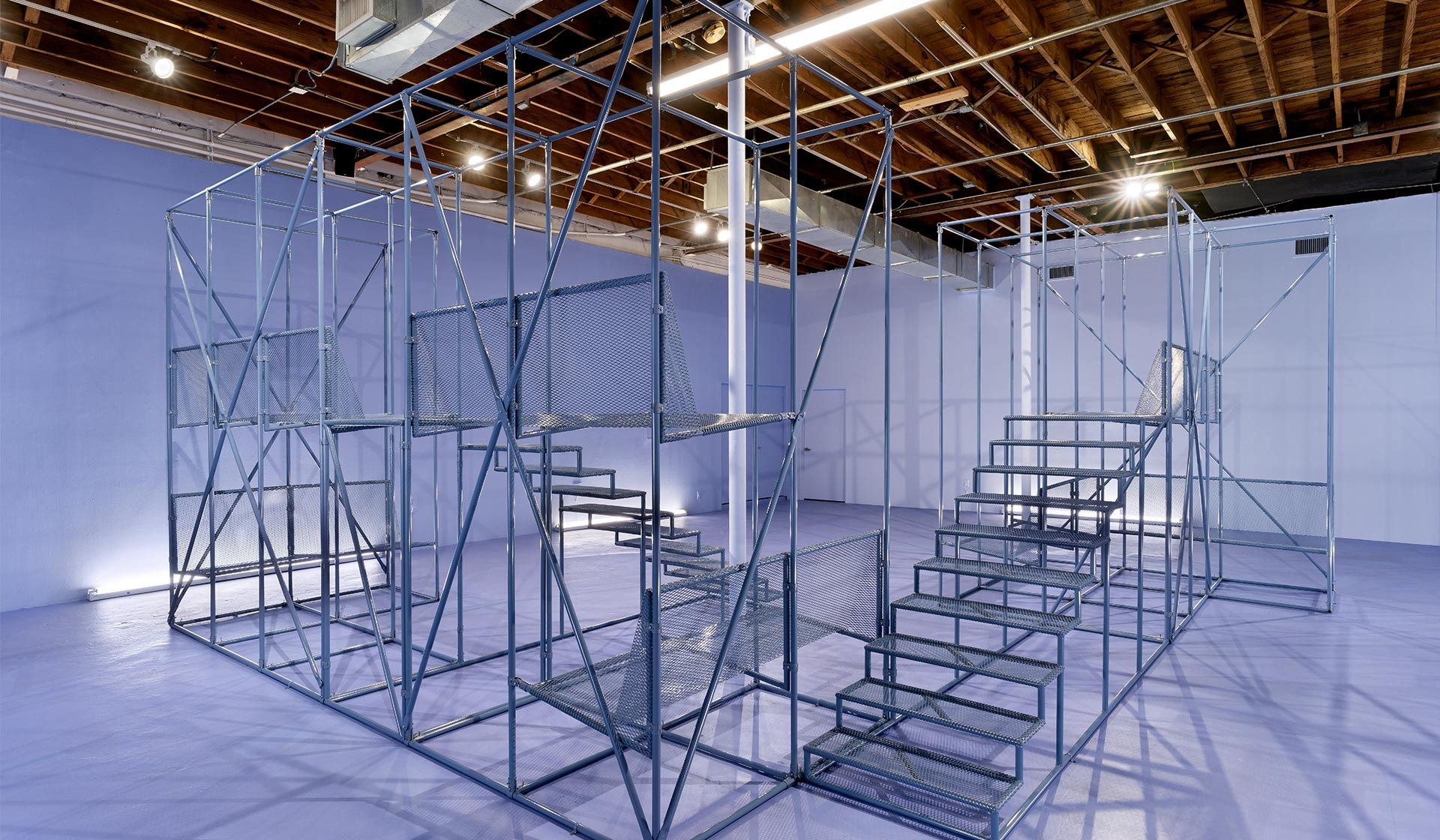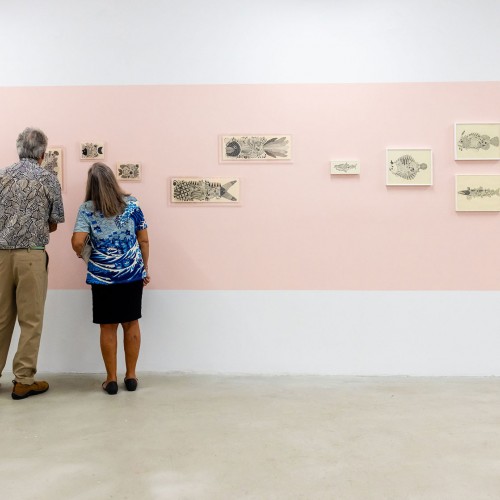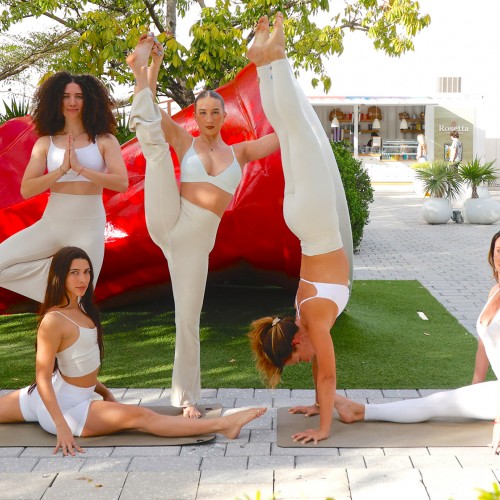The literal architecture of the internet is a grid-like maze of connections that create networks of information sharing. As the internet’s role in society has evolved, those connections have become exceedingly interpersonal with our private lives cast out into the public, our identity can easily become clouded by how we present ourselves within this technological world. This push-and-pull between our public personas and private selves becomes a tug-of-war that seeps into our relationships, as intimacy and authenticity hang in the balance: We’re more connected than ever to one another yet feel so much more alone.
GeoVanna Gonzalez’s How To: Oh, Look at Me brings this dichotomy to life, with an installation and film activation that references architecture to consider the intersection of public and private life. The exhibition, on view at Locust Projects through May 22, layers the artist’s numerous explorations with sculpture, color, performance, poetry and film to create a space for introspection into who we are online versus who we are in life.
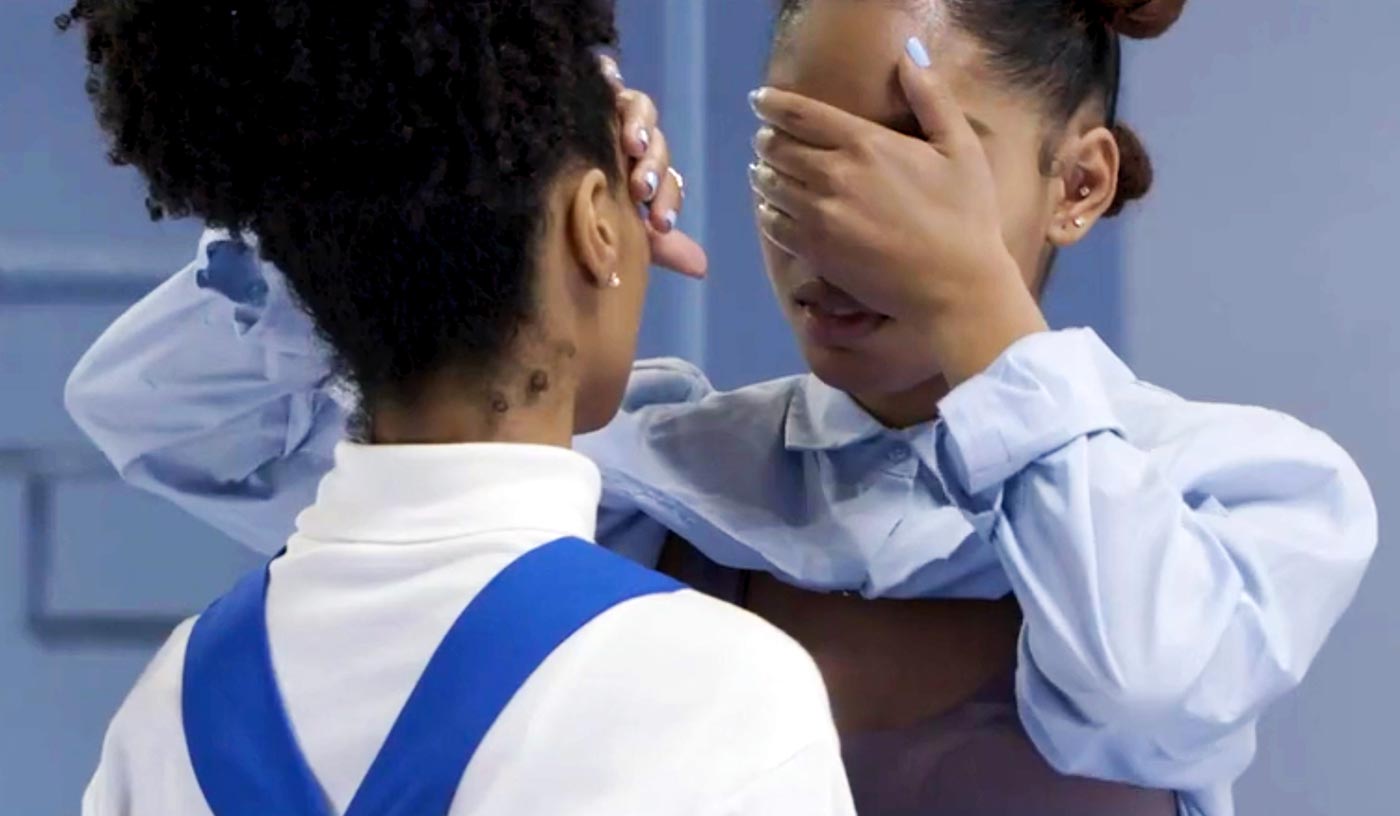
HOW TO: Oh, look at me emerges from the idea that our identities are constantly being molded and shaped, a process reflected in both the work and the project that inspired it. The exhibit is part of an ongoing series in which Gonzalez creates works of art that visualize poems featured in the online open-source poetry collection tutorials by Martin Jackson at www.tutorials.fyi. Written and shared in cloud-based Google Docs, readers are invited to comment and edit the poems, creating a constantly evolving collection of poetry that is never complete.
This is the artist’s fifth iteration of this series of works that translate the poems into visual form. HOW TO: Oh, look at me is inspired by the poem No Rothko, and features a large, wrought iron sculpture that visitors can sit in as a meditative space. Surrounded by a palette of blues, the work builds upon the feelings Gonzalez experiences when staring at a Rothko painting while imagining the grid-like infrastructure that both resembles architecture and makes up the internet. “What I really see in this poem,” Gonzalez told me in her studio, “is that there are two people where one sees something and the other doesn’t. It’s the idea of complete subjectivity, where everyone who looks at a Rothko feels something different.”
In her practice, Gonzalez frequently references architecture and infrastructure and directs viewers toward leisure, an abolitionist theory based on rest as a method of activism. In the case of HOW TO: Oh, look at me, Gonzalez specifically turns her gaze to Jackson’s internet poetry database, which allows people to make their personal mark on a work that exists entirely in the public domain. It references how we interact with social media platforms, displaying our personal information on platforms that increasingly can be seen as harmful to some. When entering the gallery space, visitors are asked to put a sticker over their camera phones, asking them to reflect on who they are when no one is looking and they have no one to share it with.
“What fascinates me about infrastructure is that it’s invisible,” she says. “We’re always moving through these spaces and never questioning them.”
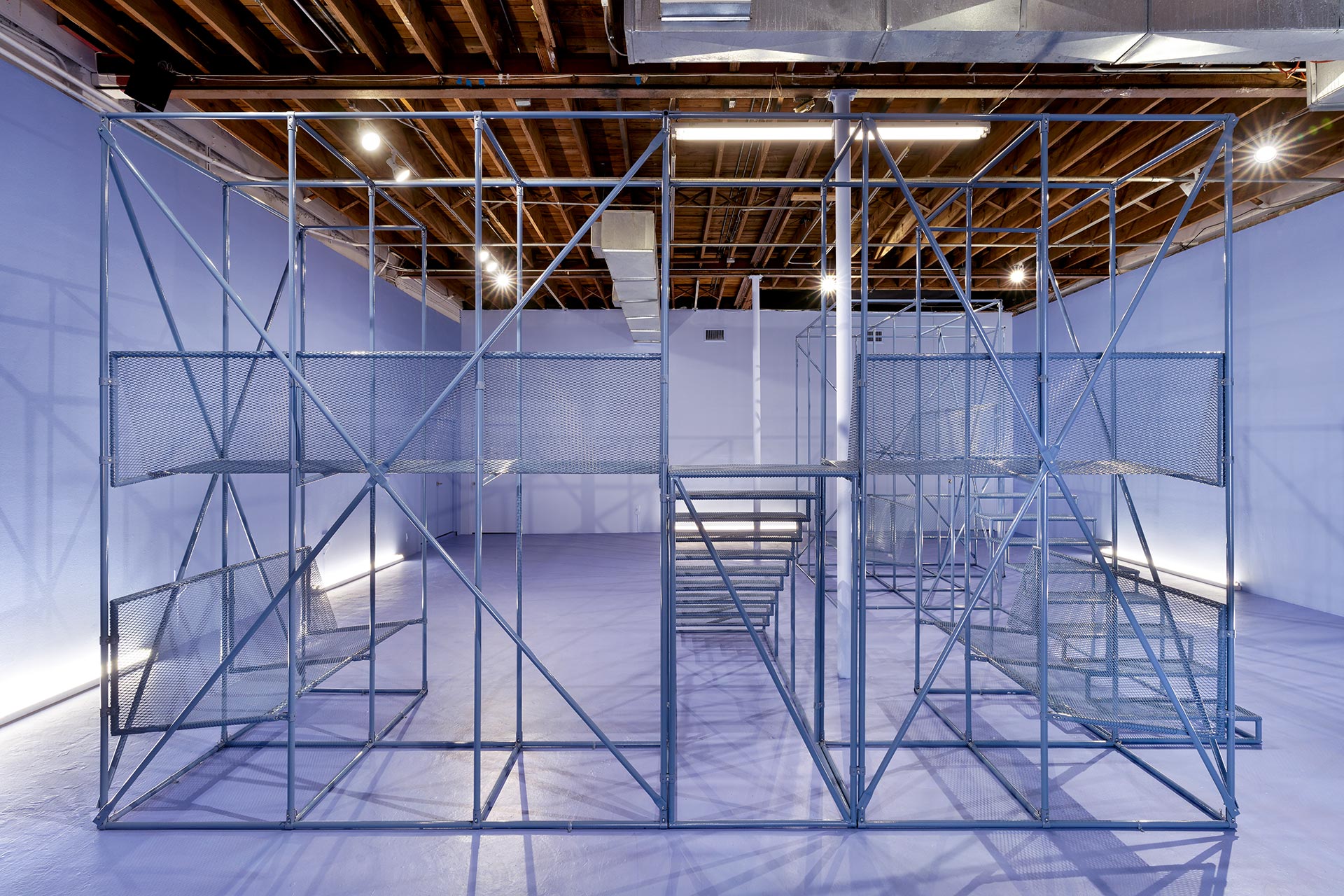
The exhibition is activated by dancers Alondra Balbuena and Chaina Ramos, Their movements in response to the sculpture allude to the way we interact online: The transition from fashioning our public personas - the things we share, and the ones we obscure - to surrendering our private data, all in a single click. In the film, Balbuena and Ramos are in a constant state of rejection and acceptance - their bodies writhe together then move apart, the rhythm and tempo increasing and decreasing in intensity as their struggle becomes more fervent. Gonzalez also commissioned local poets Zaina Alsous and Arsimmer McCoy to write new poems for the exhibition, who responded to both the dancers’ choreography and the architecture within the space.
McCoy’s poem, To Hide & Seek intends to reveal what’s possible in human relationships when one lets their guard down. “Somebody come find me”, the poem begins, and takes us through McCoy’s “own journey with intimacy and relationships of all kinds, the walls I have had to put up to protect me from the hell I have already endured,” she says. The poem alludes to this dual identity, this public and private persona - the one we let others see and the one we keep locked safely away.
Gonzalez’s work has this tension about it - it’s rarely satisfied with a one-dimensional view and challenges the viewer. She brings us into a new realm of possibility, one with rigid lines and hard structures that bend at our will. In the end, she seems to say, it’s all about what we make of it.
“I think we have multiplicities in ourselves,” she says. “We’re not just one being. We’re breaking away from the binaries within ourselves.”

